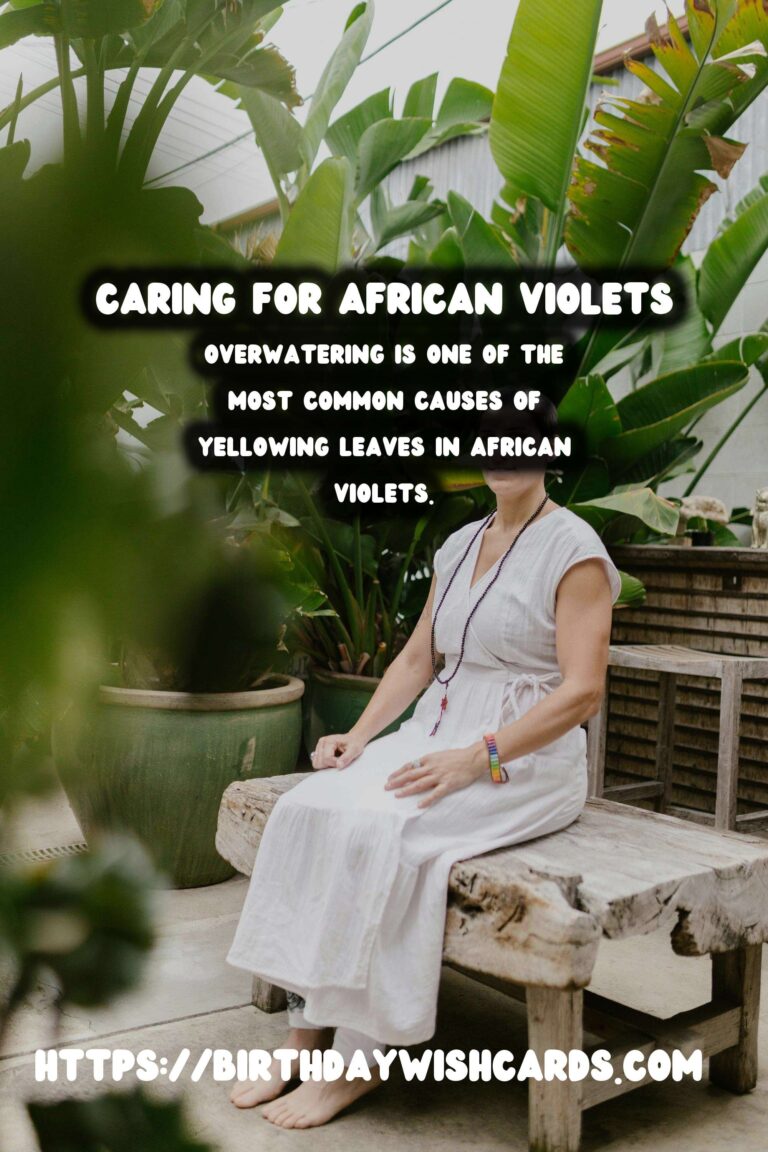
African violets are among the most cherished indoor plants, known for their vibrant blooms and lush foliage. However, one common issue many plant enthusiasts face is the yellowing of leaves. Understanding the reasons behind this phenomenon and knowing how to address it is crucial for maintaining the health and beauty of your African violets.
Understanding Yellowing Leaves
Yellowing leaves in African violets can be a sign of various underlying issues. It is essential to identify the root cause to apply the correct remedy. Below are some potential reasons for this condition:
Overwatering
Overwatering is one of the most common causes of yellowing leaves in African violets. These plants prefer slightly moist soil but are highly susceptible to root rot if left in waterlogged conditions. Ensure that the pot has proper drainage and allow the top inch of the soil to dry out between waterings.
Underwatering
Conversely, underwatering can also lead to yellowing leaves. African violets need consistent moisture to thrive. If the soil becomes too dry, the leaves may start to turn yellow and wilt. Regularly check soil moisture and water your plant when the top feels dry to the touch.
Nutrient Deficiency
Yellow leaves can also indicate a lack of essential nutrients, particularly nitrogen. African violets require a balanced fertilizer to maintain their vibrant green foliage. Use a water-soluble fertilizer specifically formulated for African violets and follow the recommended application instructions.
Poor Lighting
African violets thrive in bright, indirect light. Insufficient light can cause leaves to yellow and weaken the plant. Position your plant near a window with filtered sunlight, or use artificial grow lights if natural light is insufficient.
Pest Infestations
Pests such as aphids, mites, and thrips can cause damage to African violets, leading to yellowing leaves. Regularly inspect your plants for signs of pests and treat infestations promptly with appropriate insecticidal soap or neem oil.
Temperature Stress
Temperature fluctuations or exposure to drafts can stress African violets, causing leaves to yellow. Maintain a consistent temperature range between 65°F and 75°F, and avoid placing your plant near heaters or air conditioners.
Soil pH Imbalance
African violets prefer slightly acidic soil with a pH between 6.0 and 6.5. If the soil is too alkaline, it can lead to nutrient lockout, resulting in yellow leaves. Test your soil’s pH and amend it if necessary using soil acidifiers.
How to Prevent Yellowing Leaves
Preventing yellow leaves involves maintaining optimal growing conditions for your African violets. Here are some tips:
- Water your plant only when necessary and ensure proper drainage.
- Provide adequate lighting, but avoid direct sunlight.
- Fertilize regularly with a balanced formula.
- Monitor for pests and treat infestations promptly.
- Maintain a stable temperature environment.
Conclusion
Caring for African violets involves understanding their specific needs and adjusting your care routine accordingly. By identifying the cause of yellowing leaves and taking proactive measures, you can ensure your African violets remain healthy and vibrant, gracing your home with their beautiful blooms year-round.
Yellowing leaves in African violets can be a sign of various underlying issues. Overwatering is one of the most common causes of yellowing leaves in African violets. Insufficient light can cause leaves to yellow and weaken the plant. Pests such as aphids, mites, and thrips can cause damage to African violets, leading to yellowing leaves. Preventing yellow leaves involves maintaining optimal growing conditions for your African violets. 
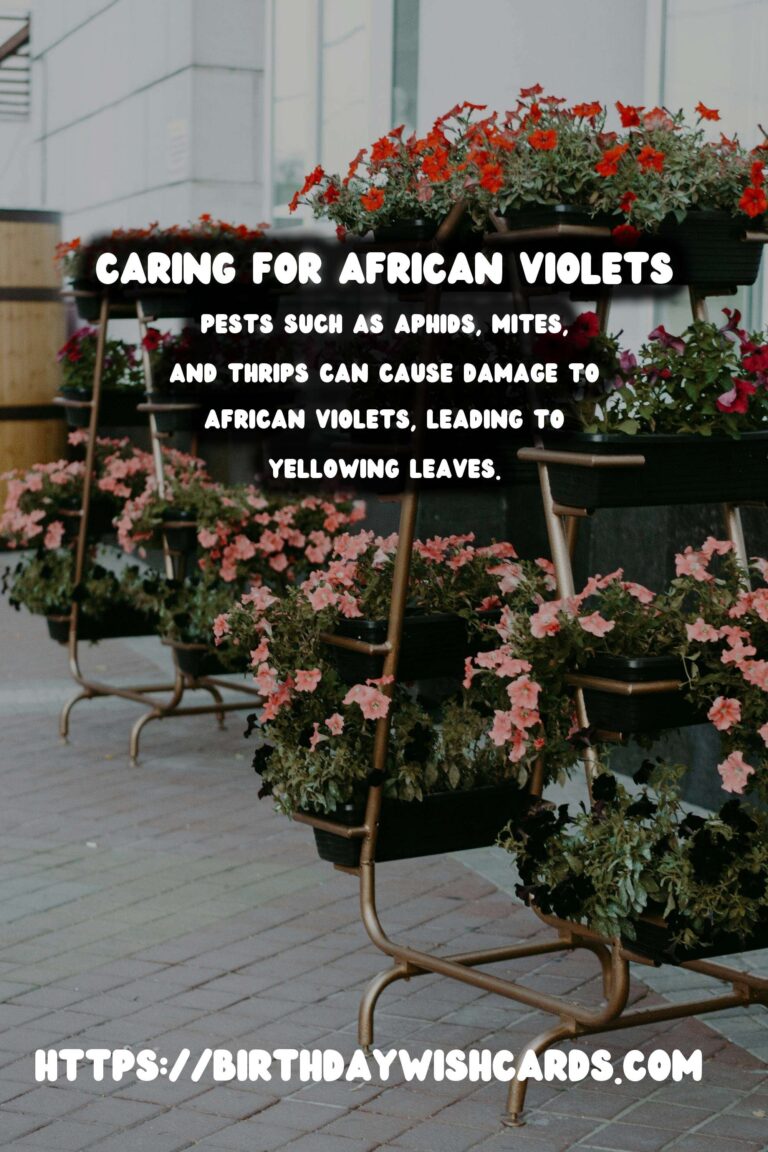
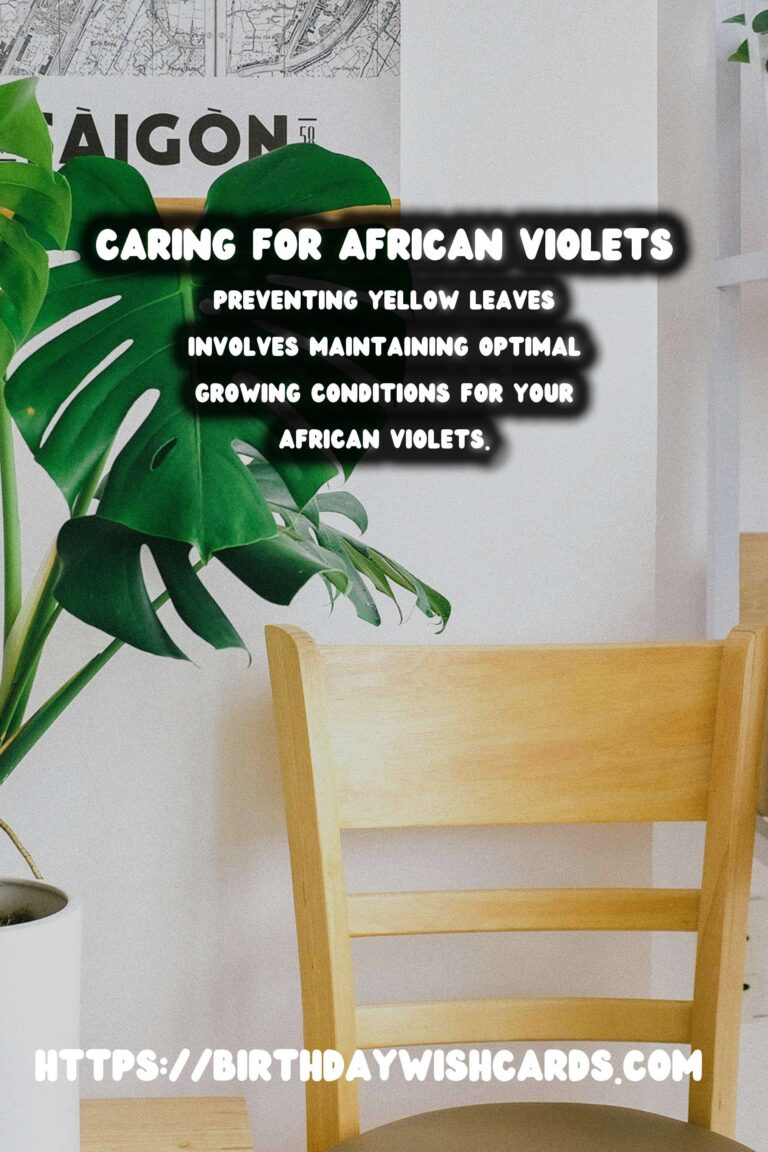
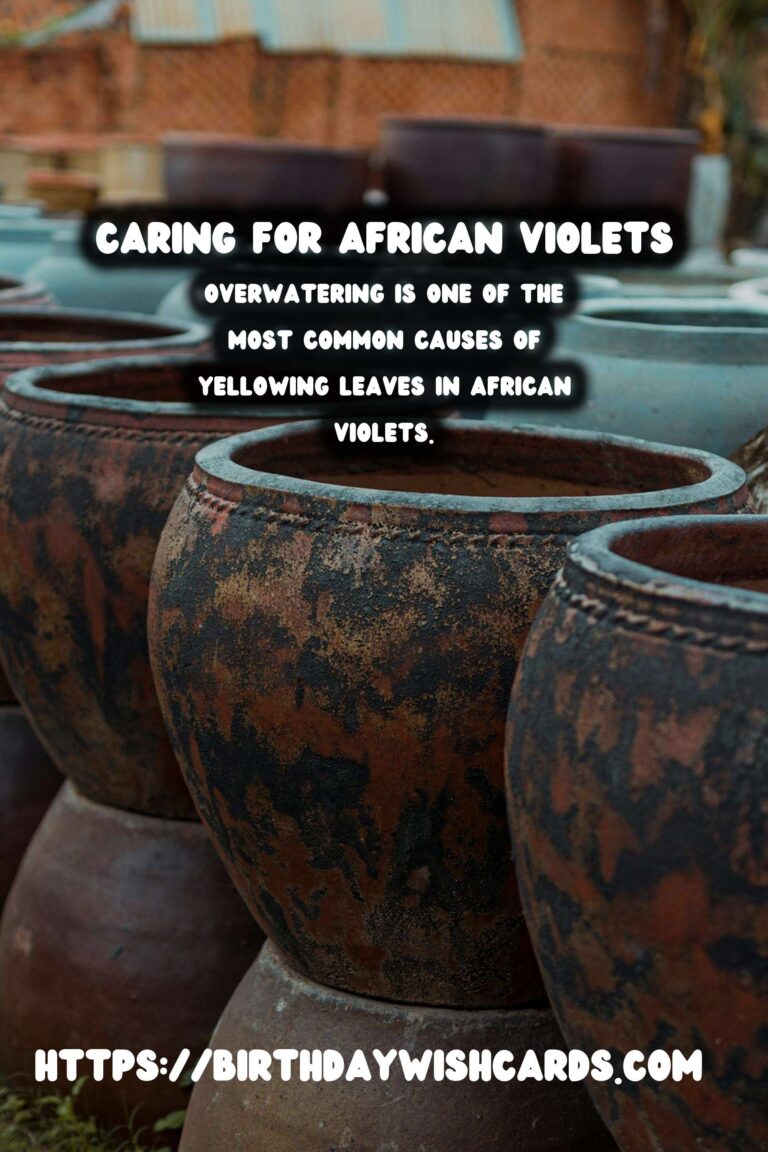
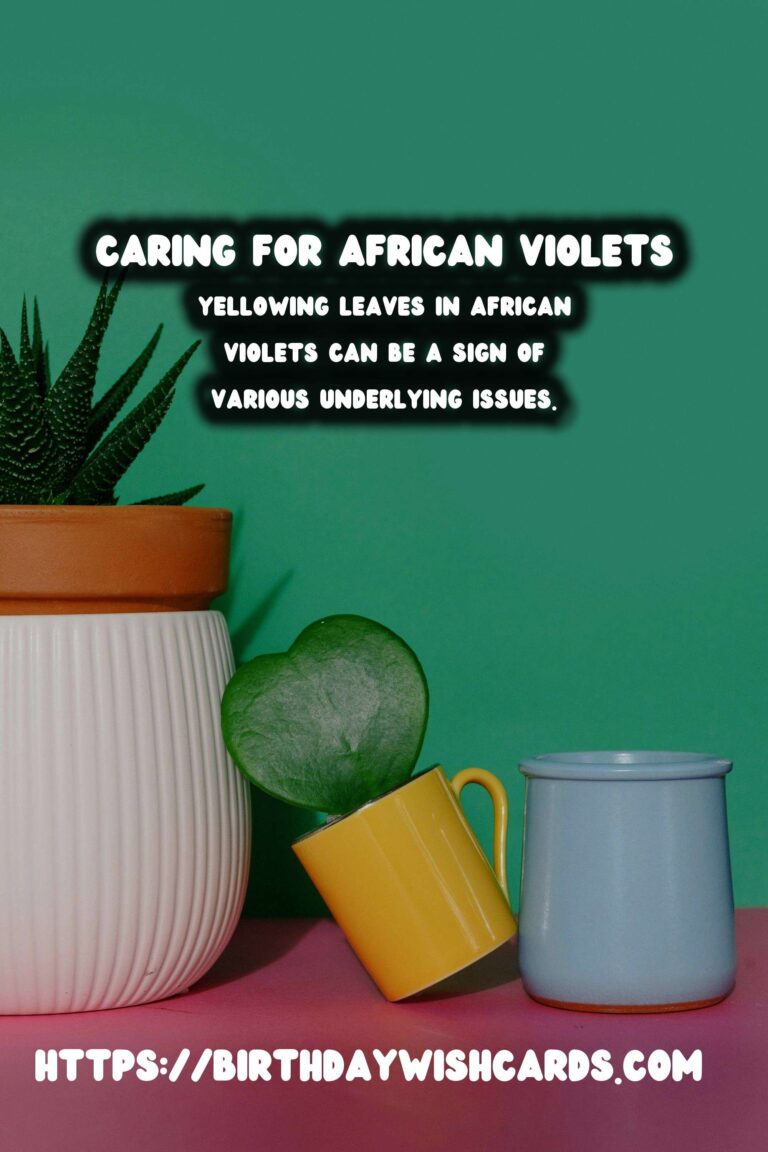
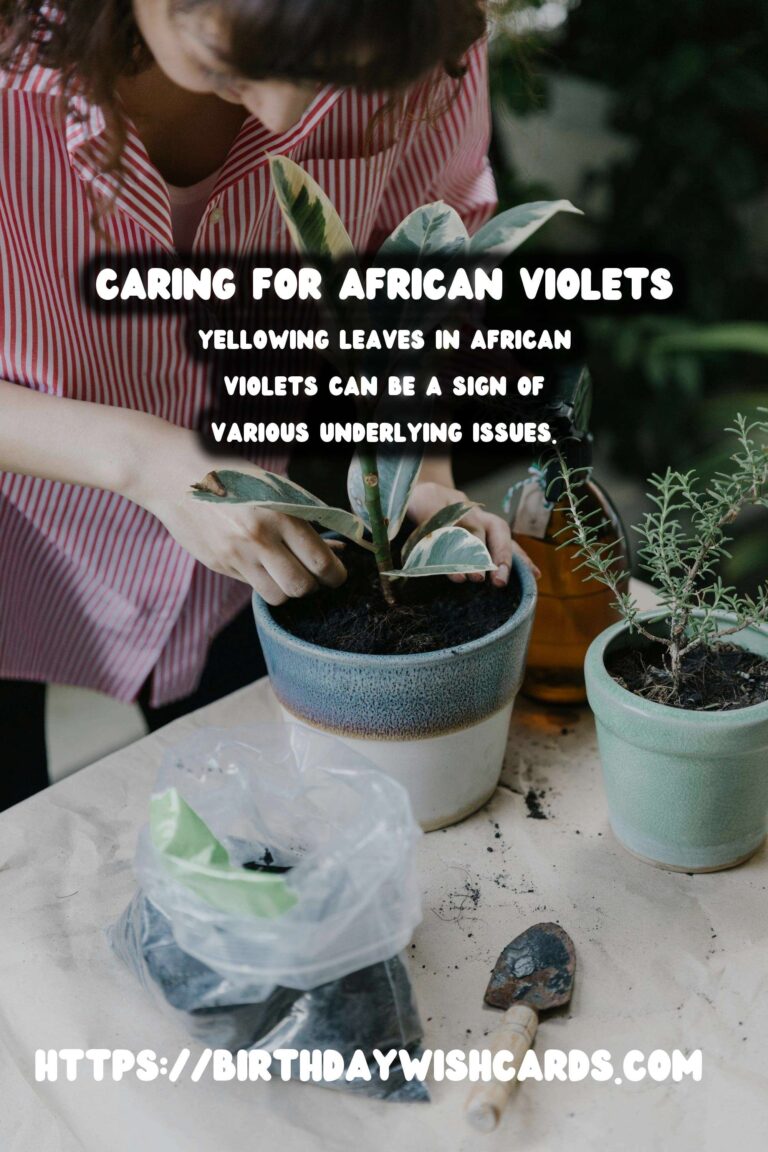
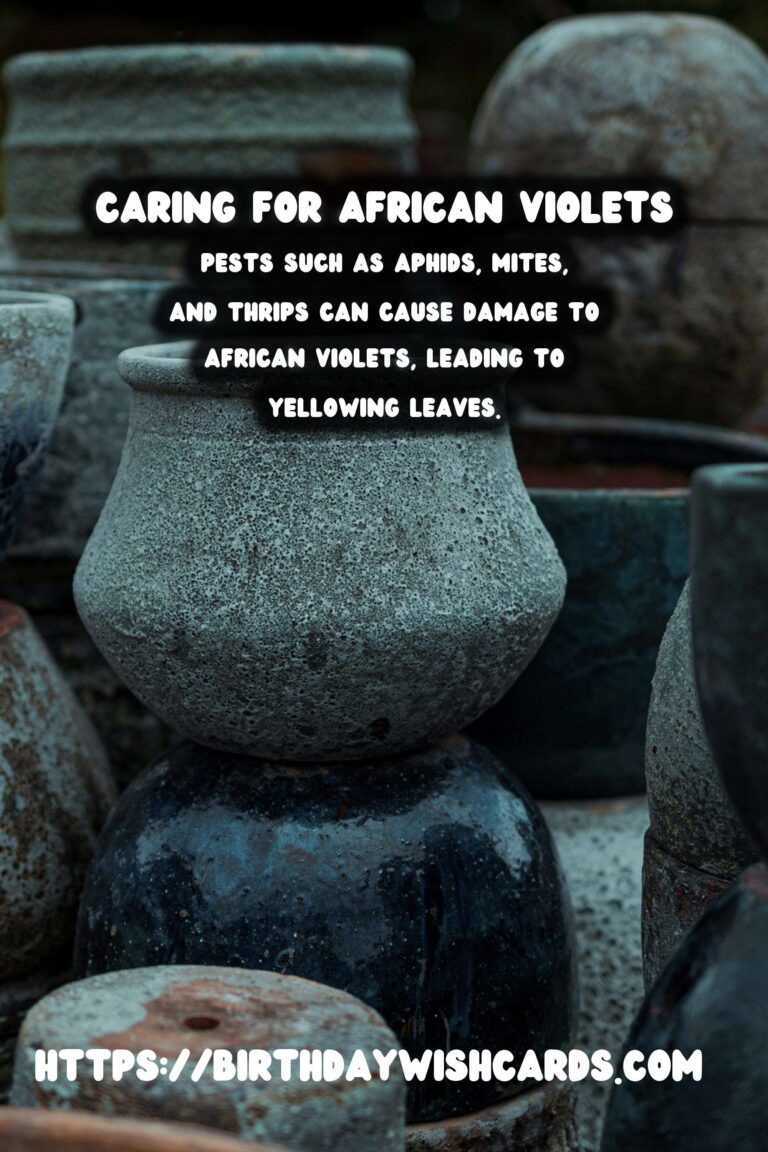
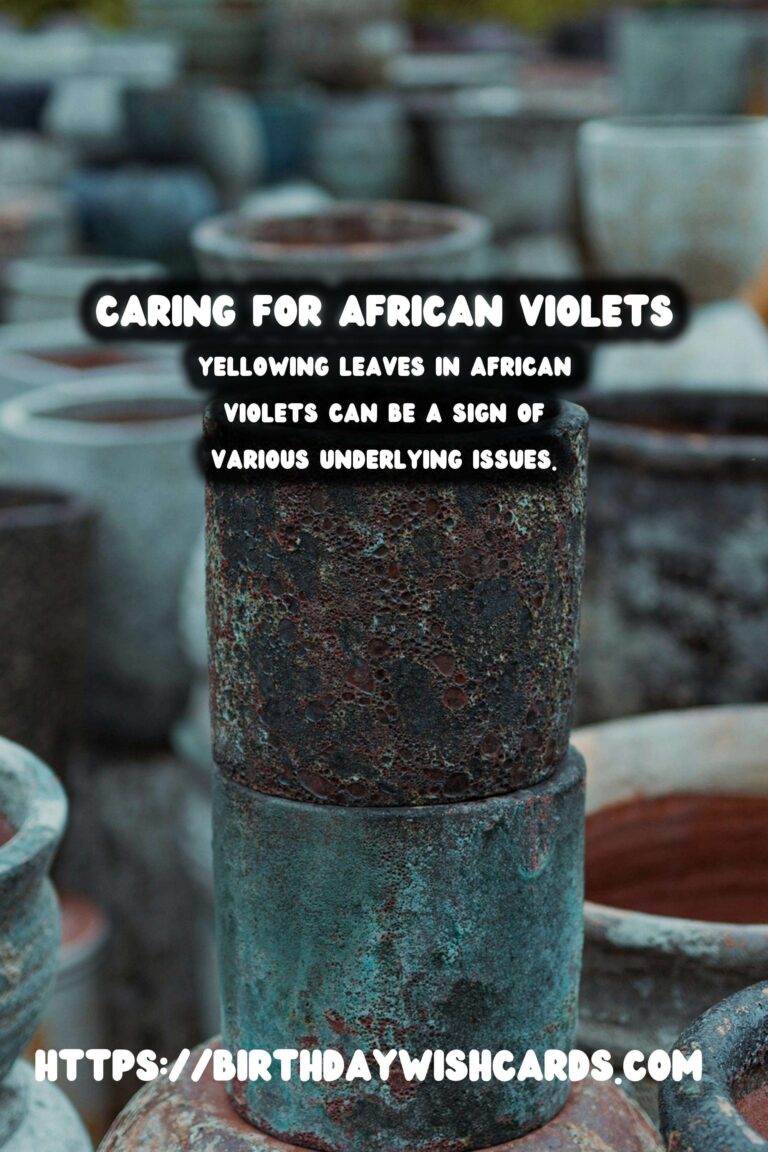
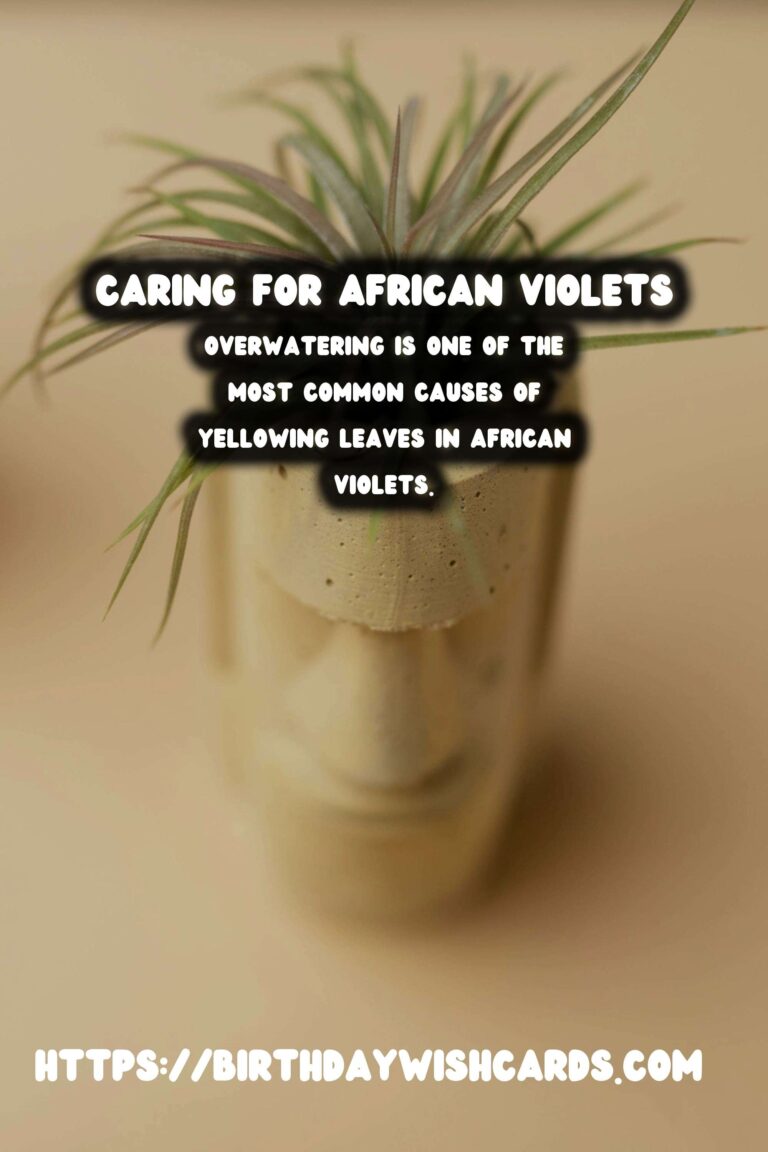
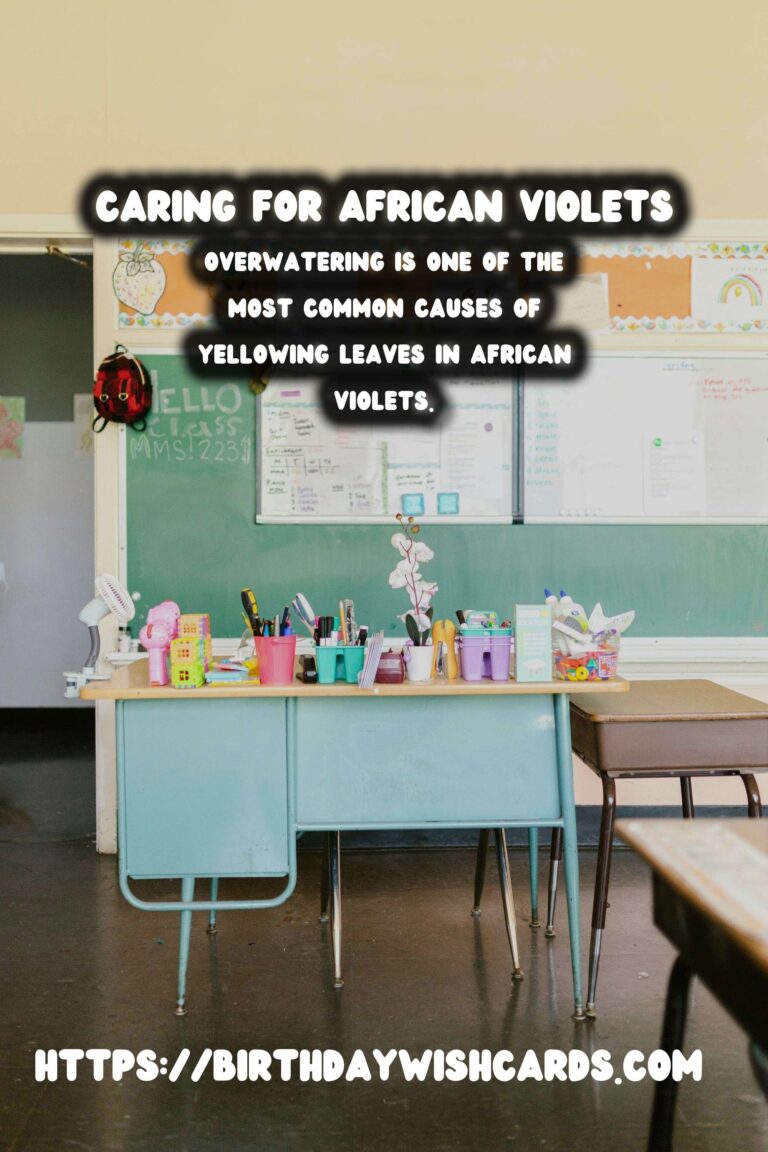
#AfricanViolets #PlantCare #GardeningTips #IndoorPlants #Houseplants




